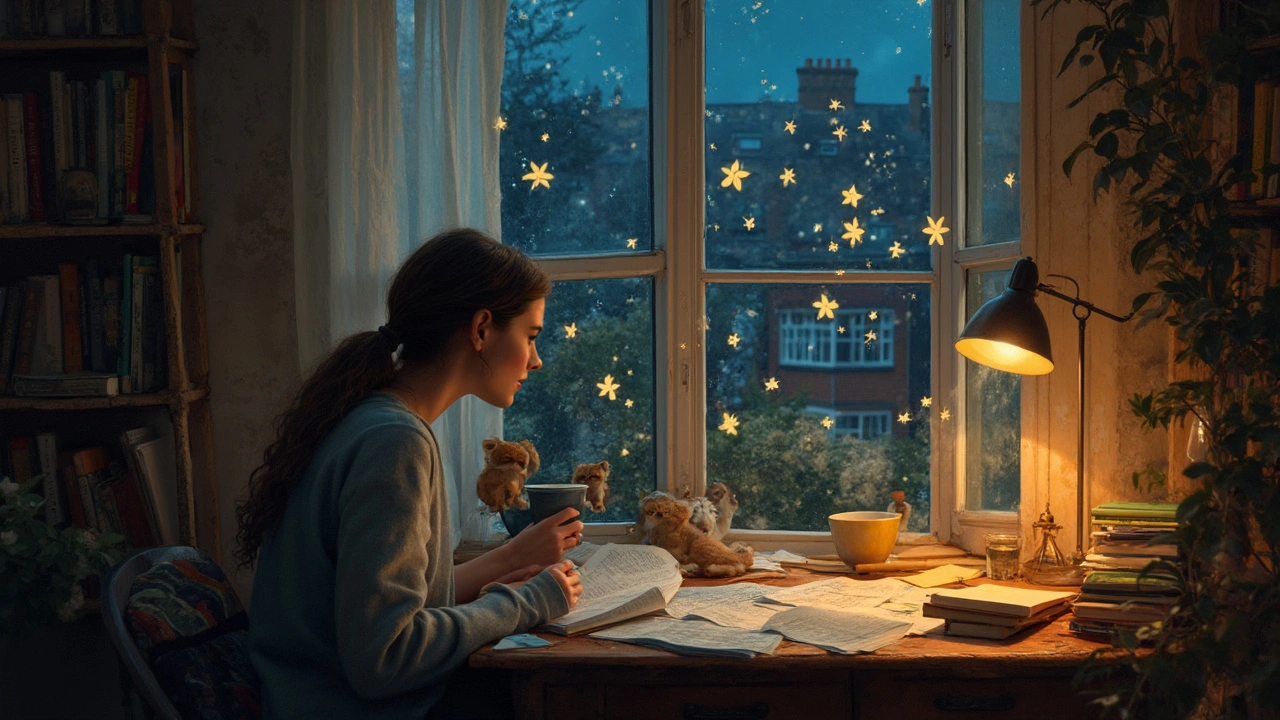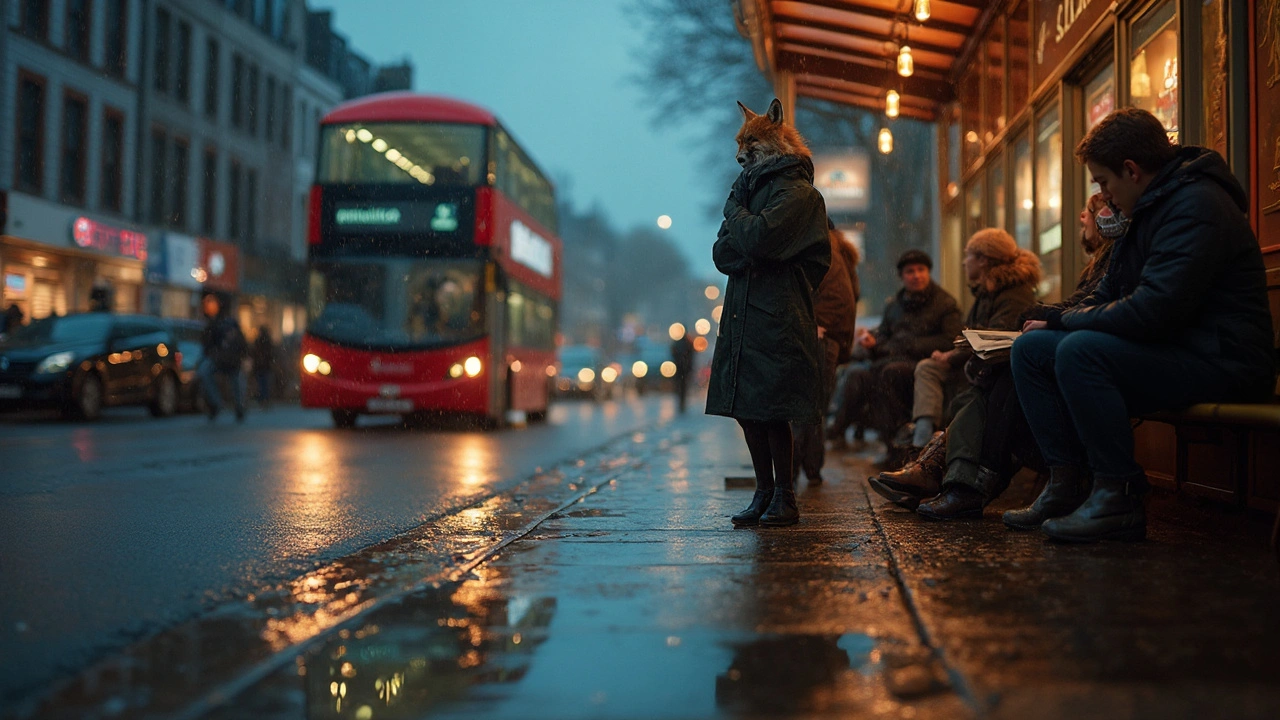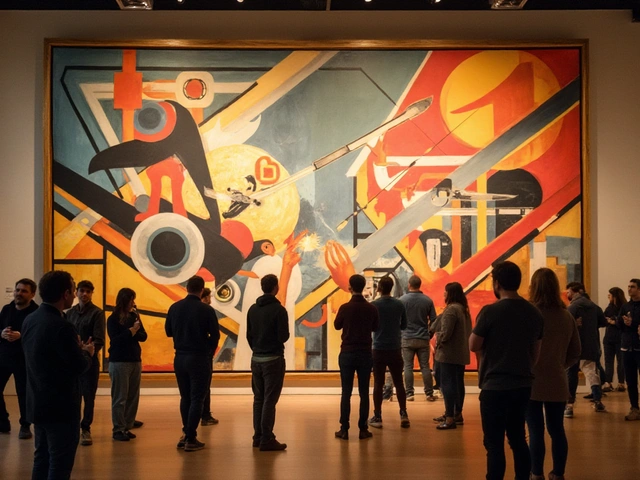The seams of daily life are fraying: deepfakes blur truth, climate acts like a trickster, and our feeds splice grief with memes in the same scroll. No wonder readers crave stories where reality holds but the impossible quietly breathes inside it. This piece lays out why that form-not epic fantasy, not surreal dream logic-has become the mood and method of the century. Expect a clear definition, crisp comparisons to neighboring genres, a practical roadmap to read and write it well, a data-rich table of global examples, and a set of checklists and FAQs you can use right away.
- TL;DR: The 21st century feels uncanny yet ordinary; magical realism captures that blend better than any other genre.
- Key traits: one rule-breaking element woven into a faithful, contemporary world; no grand explanations; social reality remains the frame.
- Use it to tackle migration, tech unreality, climate shock, and identity-without leaving the real world behind.
- How-to: pick one impossible rule, normalize it, ground everything else in precise, sensory detail; avoid “exotic” window dressing and tidy metaphors.
- Start with Exit West, Carpentaria, Lincoln in the Bardo, Kentucky Route Zero, and Boy Swallows Universe for modern, accessible on-ramps.
What Makes Magical Realism Fit the 21st Century
First, a clean definition. In this tradition, the world is recognizably ours-streets with potholes, rent due, phones buzzing-yet one impossible thing slips in and everyone treats it as mundane. No wizard schools, no portals with maps and lore. The tone is matter-of-fact. The magic offers pressure and clarity, not escape. The form emerged in 20th‑century Latin American literature, then traveled across continents; in the 21st century it has gone fully global and cross‑media, from fiction to film to games.
Why has it become the genre of now? Five big drivers:
- Digital unreality. Our days already feel half‑enchanted: algorithms guess desires, filters bend faces, AI finishes sentences. Stories that treat the uncanny as normal feel honest about this era.
- Migration and mixed identities. Borders are hard; belonging is soft. Impossible elements-doors, ghosts, doubles-let writers stage the way past and present, here and there, share the same room. Mohsin Hamid’s Exit West (2017) turned migration into literal doors, forcing characters to face logistics and love without leaving reality’s frame.
- Climate weirdness. Heat waves in spring, bushfires flipping the sky (Australia’s 2019-20 Black Summer), fish where they shouldn’t be. “Nature” reads like a character again. Magical realism lets weather, animals, and place exert will while the town meeting still happens on Wednesday.
- Public grief. Pandemic loss made ghosts plausible company. A book like George Saunders’ Lincoln in the Bardo (2017, Booker Prize) puts the dead in conversation without switching to high fantasy. We recognize the bureaucracy, the politics, the families-and the spectral chorus.
- Everyday absurdity. Bureaucracies deliver rules that feel magical for the wrong reasons. The genre flips that feeling into lucid narrative, exposing systems while staying close to people’s actual lives.
Now the guardrails-because labels matter for readers and writers:
- Magical realism vs. fantasy: Fantasy builds a secondary world, often with rules, history, and quests. Magical realism sticks to this world; one element breaks the rules but everyone keeps going to work.
- Magical realism vs. surrealism: Surrealism abandons realism’s logic; dreams drive structure. Magical realism keeps realistic cause and effect, just with one impossible premise allowed.
- Magical realism vs. speculative/slipstream: Speculative fiction often explains its premise (science, alt history). Magical realism refuses the lab coat. The anomaly is accepted, not solved.
Why audiences click with it in 2025 comes down to trust. We don’t trust clean answers, but we still want coherence. This form keeps the floor steady while opening the ceiling. It is precise about rent, traffic, and policy, yet loose enough to catch the invisible currents shaping how we actually live-shame, memory, myth, rumor.
It has also become a common language across mediums. Streaming can stage a single uncanny rule over eight episodes without over‑explaining. Games can let a road trip feel haunted without posting tooltips about ghosts. Illustrated fiction can tilt a city by two degrees and let readers feel the imbalance in their gut.
| Work (Year) | Medium | Region | Impossible Element | 21st‑Century Theme |
|---|---|---|---|---|
| Exit West (2017) - Mohsin Hamid | Novel | Pakistan/Global | Black doors open to other countries | Migration, borders, belonging |
| Carpentaria (2006) - Alexis Wright (Miles Franklin 2007) | Novel | Australia | Country and spirits intervene in town life | Indigenous sovereignty, mining, community |
| Lincoln in the Bardo (2017) - George Saunders (Booker Prize) | Novel | USA | Chorus of the dead comment on the living | Grief, politics, nationhood |
| Boy Swallows Universe (2018/Netflix 2024) - Trent Dalton | Novel/TV | Australia | Prophetic red telephone, uncanny mentor | Class, crime, family love |
| Spirited Away (2001) - Hayao Miyazaki | Film (Animation) | Japan | Spirit world overlaps with modern Japan | Work, greed, environmental care |
| Pan’s Labyrinth (2006) - Guillermo del Toro | Film | Spain/Mexico | Myth intrudes on fascist Spain | Authoritarianism, childhood, resistance |
| Kentucky Route Zero (2013-2020) - Cardboard Computer | Game | USA | Haunted Americana in a delivery route | Debt, labor, late capitalism |
| Fever Dream (2014, trans. 2017) - Samanta Schweblin | Novella | Argentina | Poisoned landscape speaks through a child | Toxic industry, maternal fear |
| The Ocean at the End of the Lane (2013) - Neil Gaiman | Novel | UK | Ancient forces inside an English village | Memory, childhood, threat |
| The Red Tree (2001) - Shaun Tan | Picture Book | Australia | Visual impossibilities in ordinary rooms | Anxiety, hope, daily resilience |
Genre purists will debate a few entries above, but the pattern holds: our world remains the stage; a single violation lights up what we miss when we look straight on.

How to Read and Write Magical Realism Today
Reading first, because great writing starts there. Try this approach the next time you open a novel that whispers instead of shouts:
- Name the rule that breaks. Write one sentence: “In this book, X is possible.” Keep it specific: “Doors open across borders,” not “There’s some magic.”
- Track who accepts it. Note which characters treat the impossible as normal and which resist. This map tells you whose reality is being centered.
- Watch the ordinary stay ordinary. Bills, laws, school, traffic-where do these keep their weight? That’s how you know the story is grounded.
- Measure the pressure. What does the anomaly force characters to decide? What does it clarify, complicate, or expose?
- Leave some questions unanswered. If you can diagram the magic like a system, you’re likely not in magical realism anymore.
Writing it? Here’s a clear, repeatable process:
- Start with a real, local world. Sketch a suburb, a flat above a shop, a worksite. Use a few precise nouns (tram Stop 7; a battered esky; eucalyptus haze) so readers can stand there.
- Choose one impossible rule. Make it clean and testable. Examples: “On Mondays, the dead come back till sundown.” “People hear a bell when they lie.” “Rain falls up in this town.”
- Normalize it in-scene. Characters don’t gasp. They adapt. “Pick Nanna up before she fades at six.” Show logistical friction.
- Ground everything else. Prices, smells, sunlight angles, bureaucracy. Verbs matter; pick ones that touch the world-scrape, steam, buckle.
- Give the rule consequences. If lies ring a bell, who profits? Who gets punished? Laws will follow. That’s your plot engine.
- Keep the camera close. A steady, intimate point of view helps the impossible feel lived-in, not decorative.
- End on aftertaste, not twist. Aim for recognition-“Yes, that’s how it feels”-rather than a puzzle solved.
- Revise for tone. Strip out stage directions, metaphors that explain the magic, and any paragraph that reads like mythologizing for its own sake.
Useful heuristics you can tape above your desk:
- Formula: Ordinary world + one impossible rule + real consequences = story.
- Voice rule: Deadpan beats dazzled. If your narrator’s eyebrows are constantly raised, lower them.
- Setting test: If you remove the magic and nothing in the social world changes, add stakes or clarity.
- Metaphor check: If the impossible can be swapped for a metaphor and nothing breaks, push toward literal effects people must navigate.
Pitfalls to avoid:
- Exotic garnish. Don’t bolt “quirky spirits” onto a culture you haven’t lived or studied. Read deeply, credit influences, and work with sensitivity readers if you’re writing beyond your lane.
- Trauma-mining. Magic should clarify lived experience, not turn real harm into spectacle.
- Inconsistent rules. Your one impossibility can be mysterious without being wobbly. Readers notice when it only appears to save a scene.
- Over-explanation. The genre resists lore dumps. Let pattern, consequence, and character behavior do the work.
Two quick checklists:
Is this actually magical realism?
- Primary setting is our world, present or near‑present.
- There’s one clear impossibility, treated as ordinary by at least some characters.
- Social, legal, or economic structures keep functioning and respond to the anomaly.
- No system building, prophecies, or multi‑rule magic mechanics.
- Mystery remains around how/why the anomaly exists.
Writer’s pre‑submission sweep
- Circle every sentence that explains the anomaly; cut most of them.
- Underline specific, grounded nouns; add three if the page floats.
- Mark the first page where a consequence lands; if it’s after page 5, move it up.
- Ask a reader: “What did the magic force the character to do?” If they shrug, raise stakes.
- Credit lineage in your acknowledgments; be honest about influences.

Examples, Quick Checks, and Your Next Steps
Want a short, modern reading path that spans continents and mediums?
- Exit West (Hamid, 2017). Two lovers walk through doors from a city under siege to Mykonos, London, California. Border talk becomes daily life talk; migration gets its texture back.
- Carpentaria (Wright, 2006). Northern Australia where Country and people speak to each other. Mining executives, family lines, and storms share the page. Miles Franklin Award signals its cultural weight.
- Lincoln in the Bardo (Saunders, 2017). Ghostly polyphony around a grieving president. It’s mischievous and moving, not gothic.
- Boy Swallows Universe (Dalton, 2018; Netflix series 2024). Working‑class Brisbane with a prophetic phone and a boy trying to protect his family. Heart without sentimentality.
- Kentucky Route Zero (2013-2020). A delivery run through the underbelly of American debt. You make choices, but the strangeness is baked into the roads and offices you visit.
- Spirited Away (2001). For visual language: how work, appetite, and care can be embodied through spirits without leaving everyday concerns behind.
If you prefer short forms, look to Lesley Nneka Arimah’s stories (“Who Will Greet You at Home”), Carmen Maria Machado’s collection Her Body and Other Parties, and Samanta Schweblin’s shorter pieces. They compress the rule and its fallout into 20 pages without losing social bite.
Common questions people have right after falling for this genre:
- Is magical realism still tied to Latin America? Its roots are there-think García Márquez and Alejo Carpentier-but the form has grown global. Respect matters: read the originals, understand the history, and don’t treat non‑Western myth as seasoning.
- Does AI make it obsolete or more vital? More vital. When synthetic media scrambles what’s “real,” stories that stay grounded while admitting the uncanny help us recalibrate. They train our attention on consequence and character, not spectacle.
- Where can I publish this? Literary magazines that favor realism with a twist-The New Yorker, Granta, Ploughshares, The Paris Review-regularly take pieces that fit. For book‑length work, general literary imprints (not just genre shelves) handle it well.
- How do I pitch it? Avoid the label fight. Describe the premise and effect: “A city where lies ring a bell, and the council passes noise ordinances.” Agents and editors can place it from there.
- What about classroom use? Pair a contemporary text with a foundational one: Exit West with One Hundred Years of Solitude, or Carpentaria with Pedro Páramo. Compare what the anomaly clarifies in each social context.
Quick reference-decision tips you can apply today:
- If your idea needs lore pages, it’s drifting toward fantasy-either commit to that or simplify the rule.
- If your scenes make better sense as dream logic, consider surrealism or fever‑dream structures instead.
- If your magic looks like a metaphor you can explain in one line, ask how it changes laws, money, or movement in the story. Make someone file paperwork.
- If you’re adapting for screen, keep the rule visible in production design and blocking, not just VFX. Let actors play the normalization.
Next steps and troubleshooting by persona:
- For writers with a half‑draft: Circle every scene where the anomaly does not exert pressure; merge or cut two of them. Add a new scene where the rule collides with a public system (school, courts, transit).
- For readers choosing a book club pick: Try Carpentaria if you want civic questions on the table; Exit West for migration; Lincoln in the Bardo for grief and history. Prep two questions: “What stayed ordinary?” and “Who refused the new rule?”
- For teachers: Assign a four‑column reading log-Setting details, The rule, Who accepts/resists, Consequences. Students learn to notice craft instead of hunting for symbols.
- For screenwriters: Write a one‑page “Day in the Life with the Rule.” If the scene plays without exposition and still advances conflict, you’re on track.
- For editors: Ask the author for the one‑sentence rule and three sentences on legal/social fallout. If they can’t give it, the draft needs sharpening, not copyedits.
Finally, a brief reading ladder you can climb in a month:
- Week 1: Exit West (pacey, clear rule; great entry point).
- Week 2: Carpentaria (dense, musical, expansive; read aloud in parts).
- Week 3: Lincoln in the Bardo (polyphonic, funny and grave; notice normalization of the spectral).
- Week 4: Kentucky Route Zero (play one Act a night; jot notes on how the interface carries the rule).
When the world feels stranger than fiction but you still need cause and effect, this is the genre that meets you where you live. It doesn’t soothe; it clarifies. It refuses escapism without refusing wonder. That’s why it isn’t just surviving in 2025-it’s how many of us are finally telling the truth.




